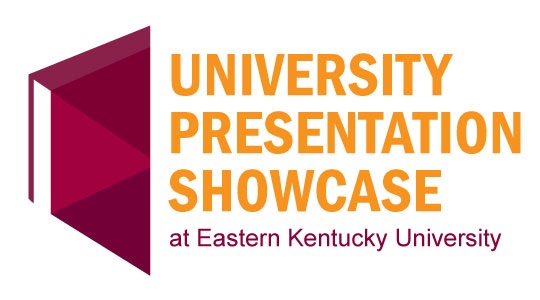
University Presentation Showcase: Undergraduate Division
Comparison of Microscan and MALDI-TOF-Mass Spectrometry Identification Methods for E. coli Isolates from Natural Waters in Kentucky, USA
Presenter Hometown
Belfry, KY
Major
Biomedical Sciences, Pre-Medical Concentration
Department
Biological Sciences
Degree
Undergraduate
Mentor
Jason Marion, Travis Altheide
Mentor Department
Environmental Health Science
Recommended Citation
Phillips, Kylee, "Comparison of Microscan and MALDI-TOF-Mass Spectrometry Identification Methods for E. coli Isolates from Natural Waters in Kentucky, USA" (2025). University Presentation Showcase Event. 30.
https://encompass.eku.edu/swps/2025/undergraduate/30
Abstract
E. coli are fecal indicator bacteria and their density in the environment can be indicative of fecal-oral pathogen diseases. MALDI-TOF-mass spectrometry improves bacterial identification speed and accuracy, while Microscan is known for classifying and assessing antibiotic susceptibility in clinical isolates. This study compares both methods using environmental E. coli isolates to explore their potential.
113 water samples were collected over 13 weeks from 62 locations in Central and Eastern Kentucky. Bacterial colonies were isolated from samples using modified mTEC agar plates from presumably positive E. coli containing wells from Idexx Colilert and ColiGlow methods. 385 isolates were obtained and re-evaluated for their utilization of enzyme substrates. 121 isolates were evaluated for species identification using the NUC-85 Microscan panels and the Vitek MALDI-TOF-MS Prime. Stata 15 and diagtest command were used to evaluate the diagnostic statistics of the Microscan for classifying E. coli as determined by the MALDI-TOF-MS.
108 isolates were deemed E. coli by the MALDI-TOF-MS, though two were not identified. Microscan agreed with 99 of 108 E. coli-determined identifications, and 9 (82% [specificity]) of 11 non-E. coli identifications. Among the five of 11 discordant identifications, Microscan had low-probability identifications. Notably, some environmental isolates of E. coli (nearly 8%) were classified by the Microscan as biochemically-related species but not E. coli, which could affect clinical diagnoses.
Microscan showed excellent agreement with MALDI-TOF-MS, despite relying on biochemical tests. Therefore, our results illustrate that the Microscan identifications for environmental isolates are quite accurate and can be coupled with antibiotic susceptibility profiles from environmental samples for informing public health surveillance efforts.
Presentation format
Poster
Comparison of Microscan and MALDI-TOF-Mass Spectrometry Identification Methods for E. coli Isolates from Natural Waters in Kentucky, USA
E. coli are fecal indicator bacteria and their density in the environment can be indicative of fecal-oral pathogen diseases. MALDI-TOF-mass spectrometry improves bacterial identification speed and accuracy, while Microscan is known for classifying and assessing antibiotic susceptibility in clinical isolates. This study compares both methods using environmental E. coli isolates to explore their potential.
113 water samples were collected over 13 weeks from 62 locations in Central and Eastern Kentucky. Bacterial colonies were isolated from samples using modified mTEC agar plates from presumably positive E. coli containing wells from Idexx Colilert and ColiGlow methods. 385 isolates were obtained and re-evaluated for their utilization of enzyme substrates. 121 isolates were evaluated for species identification using the NUC-85 Microscan panels and the Vitek MALDI-TOF-MS Prime. Stata 15 and diagtest command were used to evaluate the diagnostic statistics of the Microscan for classifying E. coli as determined by the MALDI-TOF-MS.
108 isolates were deemed E. coli by the MALDI-TOF-MS, though two were not identified. Microscan agreed with 99 of 108 E. coli-determined identifications, and 9 (82% [specificity]) of 11 non-E. coli identifications. Among the five of 11 discordant identifications, Microscan had low-probability identifications. Notably, some environmental isolates of E. coli (nearly 8%) were classified by the Microscan as biochemically-related species but not E. coli, which could affect clinical diagnoses.
Microscan showed excellent agreement with MALDI-TOF-MS, despite relying on biochemical tests. Therefore, our results illustrate that the Microscan identifications for environmental isolates are quite accurate and can be coupled with antibiotic susceptibility profiles from environmental samples for informing public health surveillance efforts.

